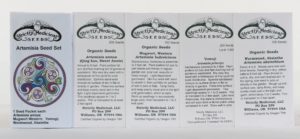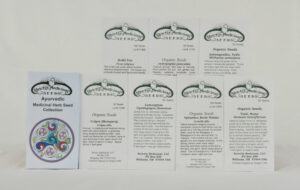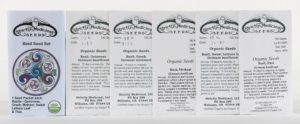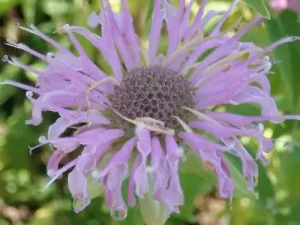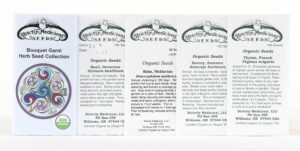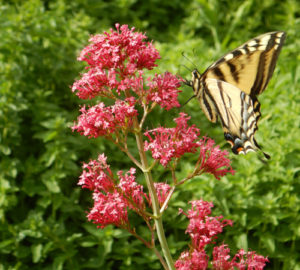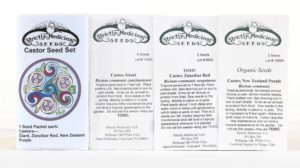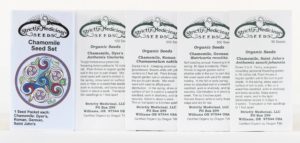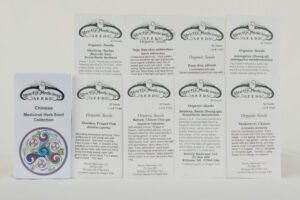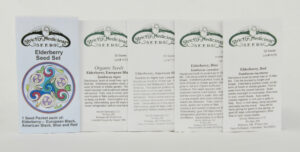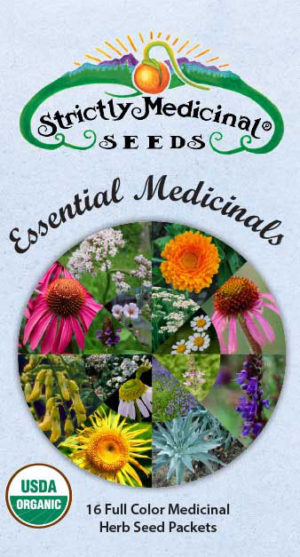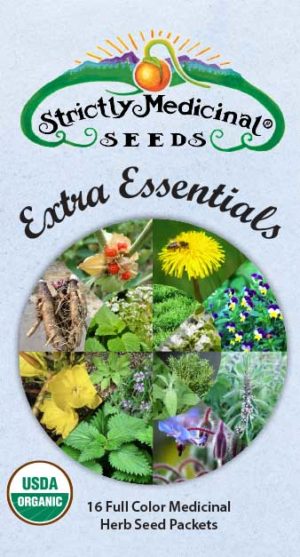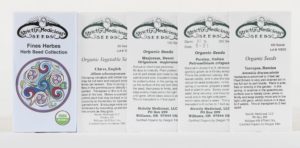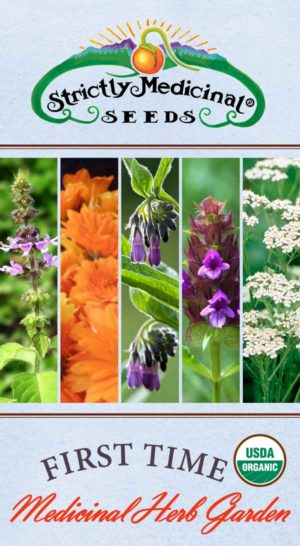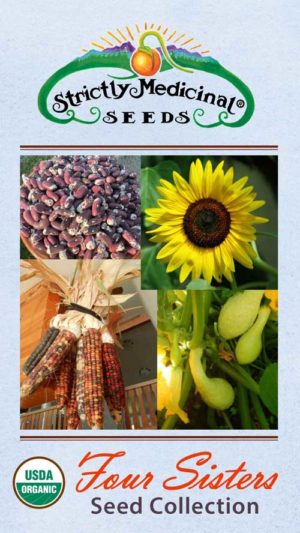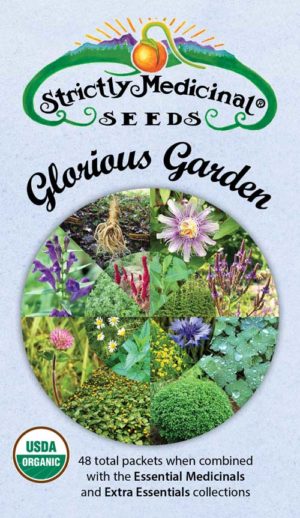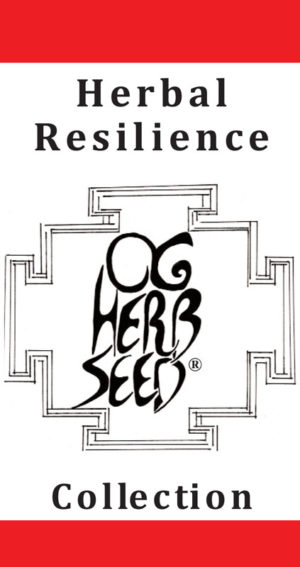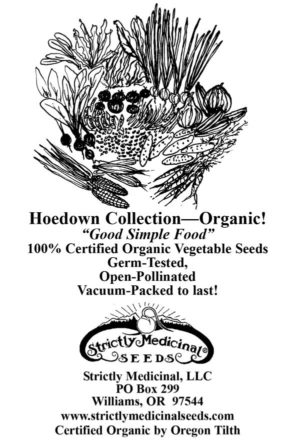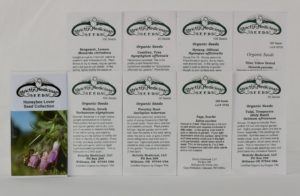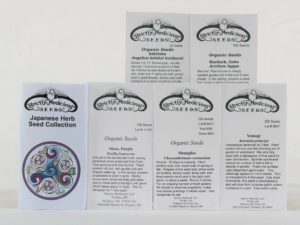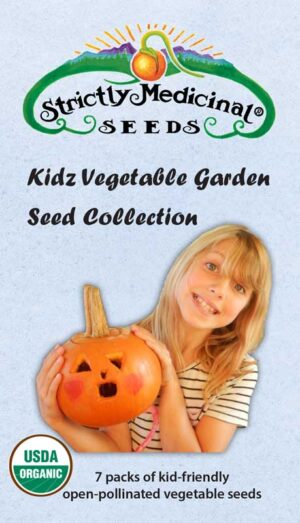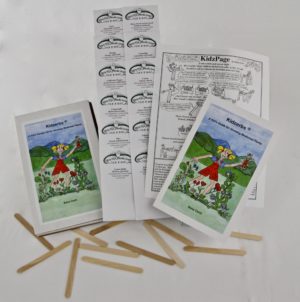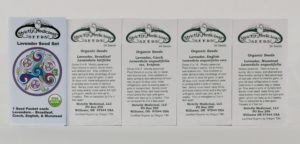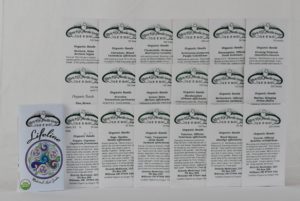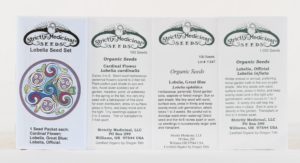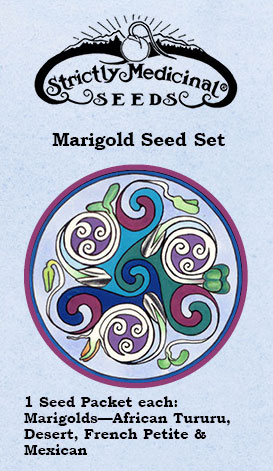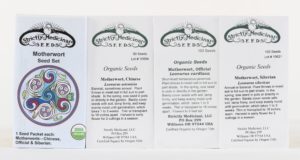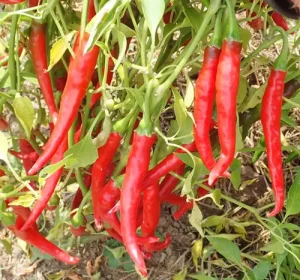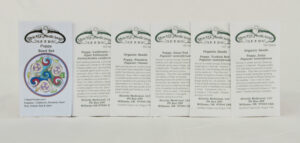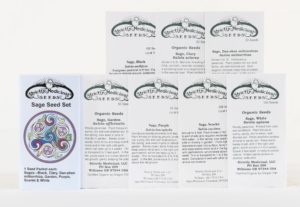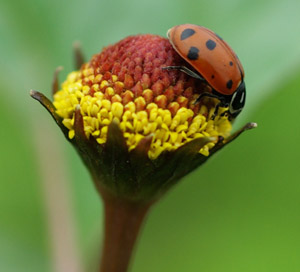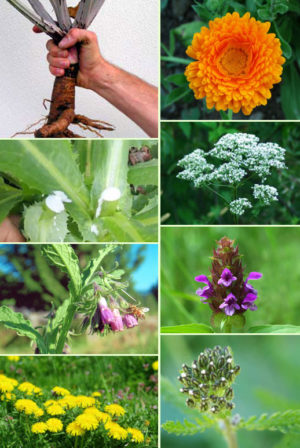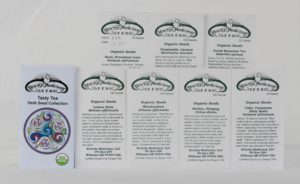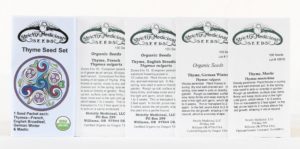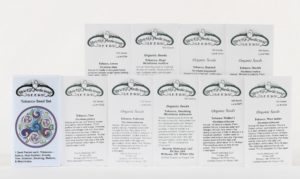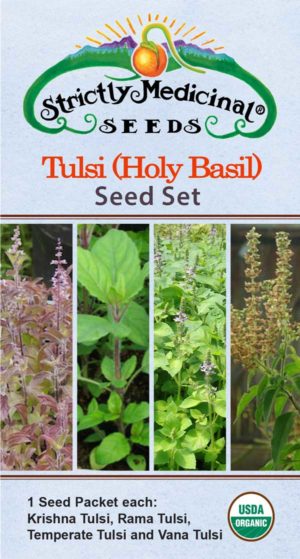In herbalism one starts with learning the simples (single herbal extracts) and eventually graduates into combining simples to make compounds. For instance, you have to get elecampane into somebody so you add a little fennel to mask the taste. Fun, functional, and limitless in terms of possibility. When I started growing and selling herb seeds, things progressed in much the same way. First I learned the individual plants, and then I started recognizing the relationships between the plants. At this point I graduated into producing sets and collections, little groupings of seed packets that somehow made sense. For instance, 3 different species of motherwort seed individually packaged, yet sold as the "motherwort set." Other seed sets soon followed. There was the culinary basil set with 5 types of culinary basil, the sage set with 8 species, the poppy set with 8 types, the tobacco set also with 8 types, culminating in what I considered to be the best set of all, our tulsi seed set that now encompasses 5 distinct types. These set-making endeavors were the result of years of finding the different species and growing them out in seclusion. Sold banded together, wrapped in a colorful cover, I felt very happy for these bright little bundles, so full of possibility!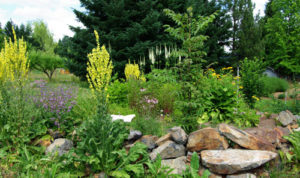
But I was not done. There were collections to hatch, including the Japanese medicinal herb collection with 6 packets (including my beloved ashitaba), the Ayurvedic seed collection that numbered 7 healing herbs coming originally from India but grow-able in the US, the Chinese medicinal herb seed collection that numbered lucky 8, the Hoedown garden seed collection containing 12 seed packets for growing good simple food, and so-forth. Truth be told my favorite collection is the survival medicinal herb garden, because these basic medicinal herbs cover the majority of herbal needs for an average homesteader: burdock, orange calendula, comfrey, dandelion, wild lettuce, self heal, valerian and yarrow. Sometimes simple is better.
In every case, with the species sets and themed collections we are providing organically certified as marked, open-pollinated, untreated, gmo-free seeds in full-size packets. Our aim is to get these to the consumer at a significant discount over the price one would pay when buying the packets singly.
Our most wide-ranging and diverse collection of medicinal herb seeds is the Lifeline Seed Collection, which contains 18 full-size packets. Here is the story of how this collection was birthed:
One evening Mayche and I were taking a stroll in the gardens. I took her elbow and guided her between the evening primroses with their yellow, mucilaginous blooms and the burdock, with its velcroed seedheads ready to burst into genetic infinity. A dragonfly swooped by, while a striped pheonix moth unfolded its inch-long proboscis into a waiting garden sage flower. In the sky, an amorphous white cloud was illuminated from behind by the setting sun, superimposed against the darkening blue of the heavens. Inspired by this tiny set of events, or perchance listening subliminally to the chattering of the plants themselves, we began to discuss putting together a set of herb seeds that would embody the foundation for a diverse medicinal garden that would contribute to every aspect of health and well-being, and making this set of seeds available to people at a very low cost, so that more would find it possible to buy them and realize the benefits. That way, our gardening friends wouldn’t have to choose. We would choose for them. “Let’s call it the LIFELINE garden,” said Mayche. “Its like throwing people a lifeline to bring them back to health.” “I like it,” I said. Then Mayche (ever the shopper) said, “And, its like lifeline pricing at the co-op, where they sell organically grown stuff like brown rice, potatoes, and dried beans for just over cost, to make sure that everybody has enough to eat. “OK,” I said, "Let's do it." And we did.
Showing all 41 results

